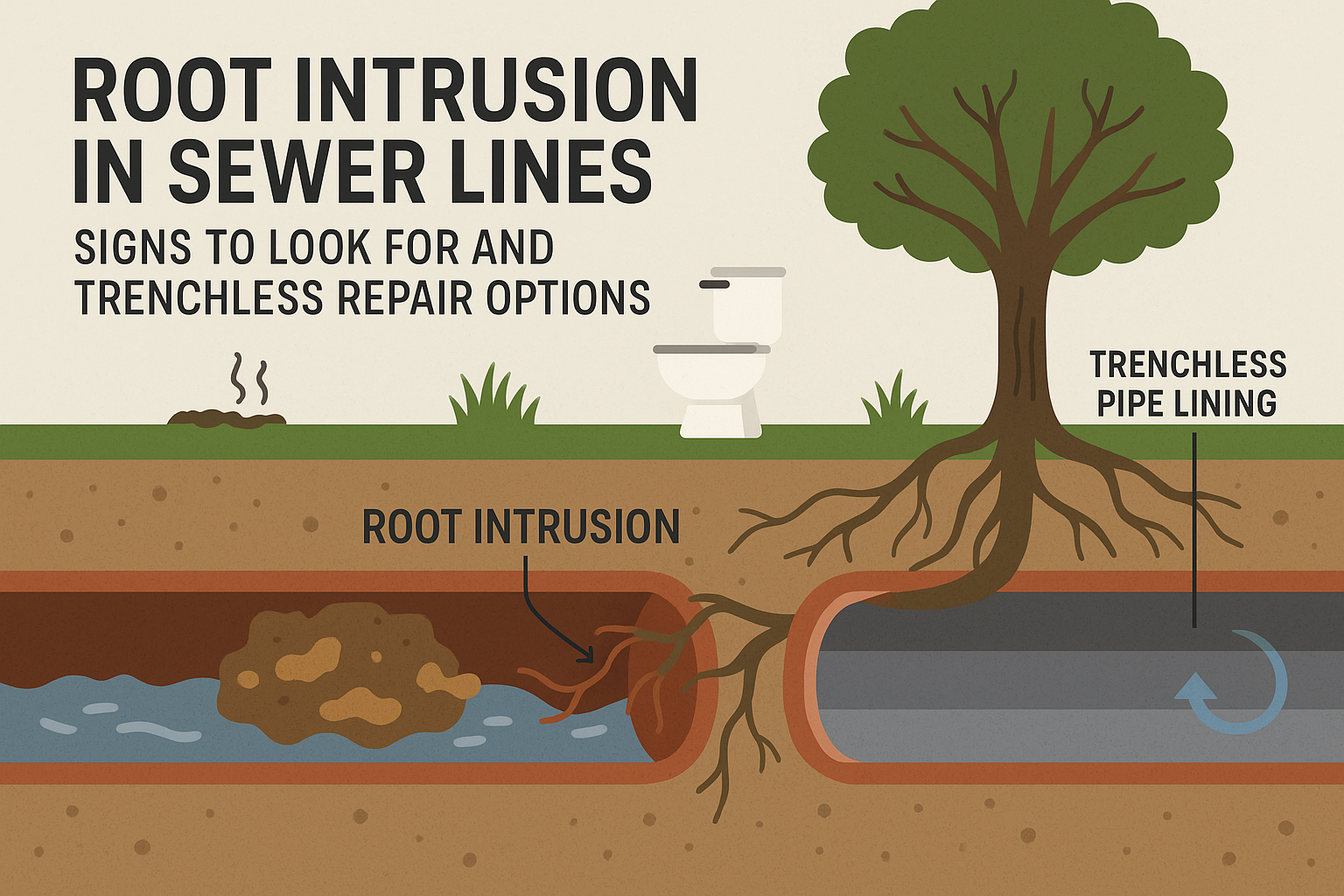- Serving Our NJ Neighbors 24/7 (888) 333-2422
What Is Root Intrusion and Why It’s a Problem for Your Sewer Line

Root intrusion is one of the most common — and most destructive — issues homeowners face with their underground sewer lines. It occurs when tree or shrub roots seek out moisture and find their way into small cracks or loose joints in your plumbing pipes. Over time, those tiny roots grow larger inside the pipe, eventually blocking water flow, damaging the pipe’s structure, or even causing a total collapse of the sewer line. Because sewer lines provide a steady source of water and nutrients, they are especially attractive to roots from trees like maple, oak, elm, and willow. Unfortunately, many homeowners don’t realize they have a root problem until the damage is extensive and costly.
This issue is particularly prevalent in older homes with clay or cast-iron pipes, which are more prone to cracks and joint separation. As the roots expand, they can trap grease, toilet paper, and other debris, leading to slow drains, backups, and foul odors. If left untreated, root intrusion can eventually cause full pipe failure, leading to messy and expensive excavations. Early detection and professional intervention are key to avoiding major disruptions to your home and wallet.
Common Signs of Root Intrusion in Sewer Lines
Recognizing the warning signs of root intrusion early can help you avoid major plumbing disasters. One of the most obvious symptoms is frequent or recurring drain clogs, particularly in multiple fixtures throughout the home — a red flag that the issue lies deep within your main sewer line. Gurgling noises coming from your toilet or drains may also indicate blocked air flow due to root buildup. Another telltale sign is water backing up in unexpected places, such as the bathtub filling when the washing machine drains. These symptoms can seem minor at first but often point to a bigger issue underground.
Additionally, watch for soggy or unusually green patches of grass in your yard, especially near the sewer line path. These may suggest a slow leak caused by cracked pipes infiltrated by roots. Unpleasant sewage odors around your property or coming from drains are also signs that waste isn’t flowing properly due to an obstruction. If you notice any combination of these issues, it’s essential to schedule a professional camera inspection of your sewer line to confirm the presence and extent of root intrusion.
Trenchless Sewer Repair: The No-Dig Solution for Root-Damaged Pipes
The good news for homeowners is that you don’t have to tear up your yard, driveway, or landscaping to fix root-damaged pipes. Thanks to trenchless sewer repair technology, there are now effective no-dig solutions that address the problem without the mess and cost of traditional excavation. Two of the most common trenchless methods are pipe lining (also known as CIPP or cured-in-place pipe) and pipe bursting. Both are minimally invasive and can restore your sewer system in just a day or two.
Pipe lining involves inserting a flexible, resin-coated liner into the damaged pipe. This liner is then inflated and cured in place, forming a smooth, seamless new pipe within the old one — effectively sealing out roots and leaks. Pipe bursting, on the other hand, involves breaking apart the old pipe while simultaneously pulling a new one through its path. These methods not only eliminate current root problems but also help prevent future intrusions thanks to stronger, joint-free piping materials. Trenchless repair is faster, cleaner, and often more cost-effective than traditional digging — making it the smart choice for modern homeowners dealing with root intrusion.





